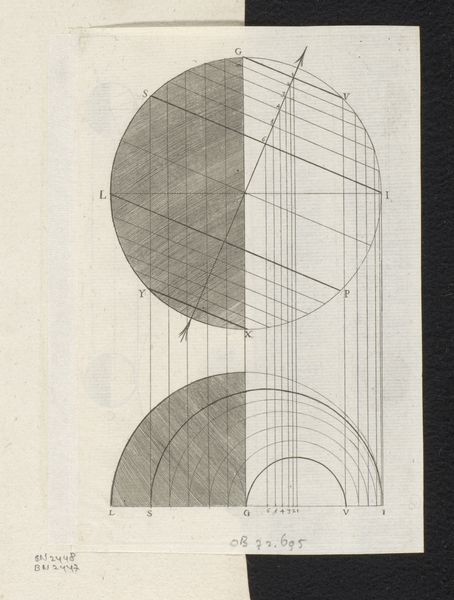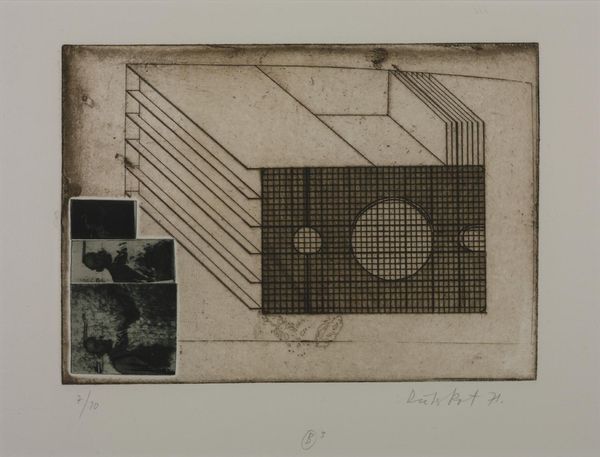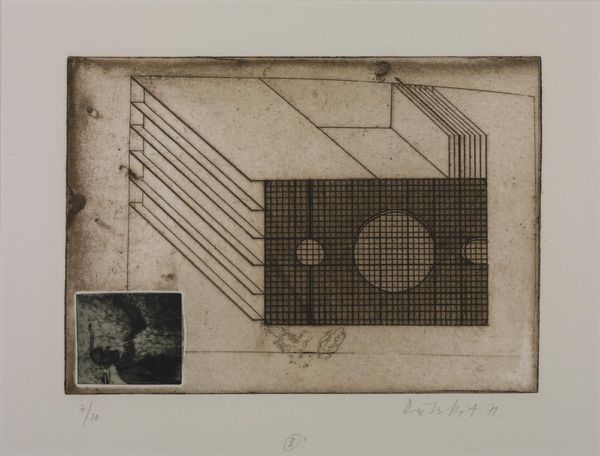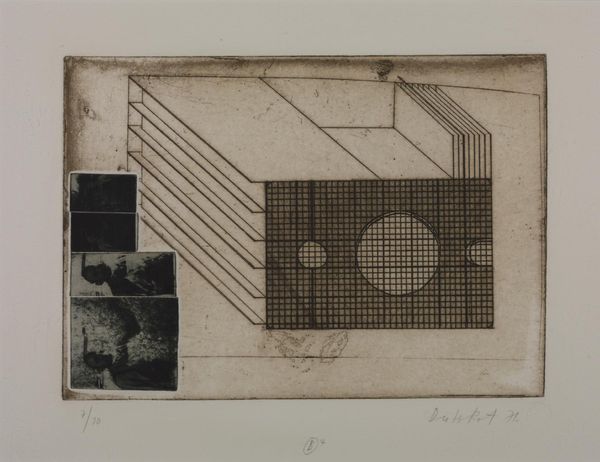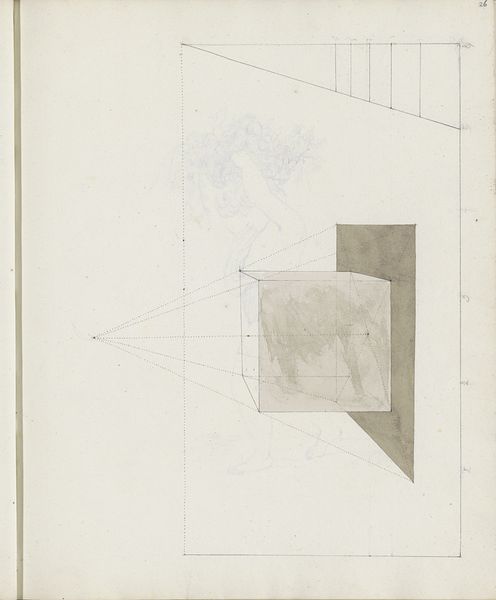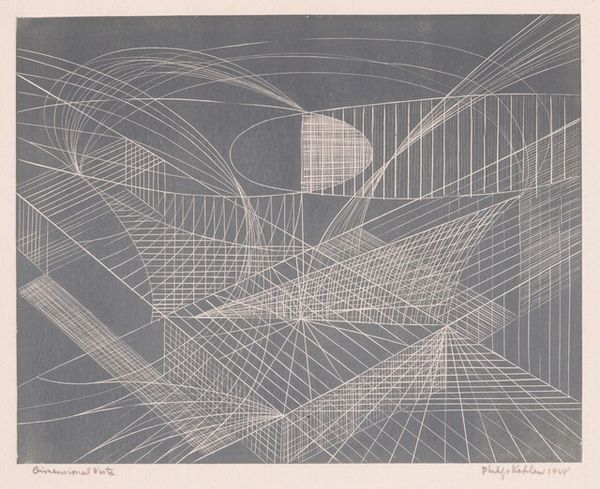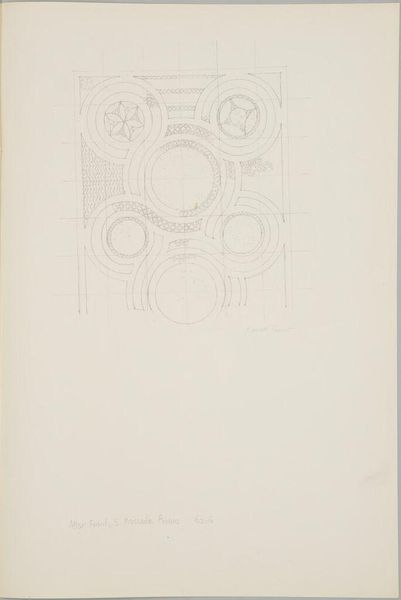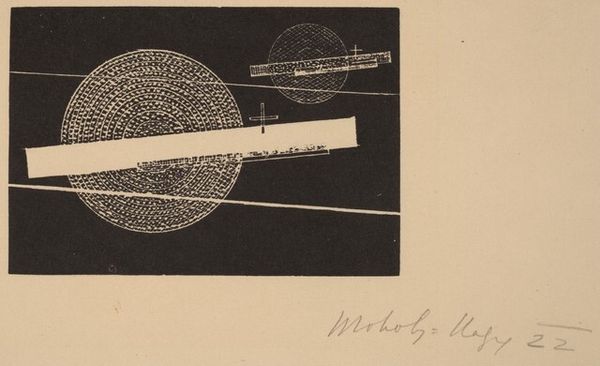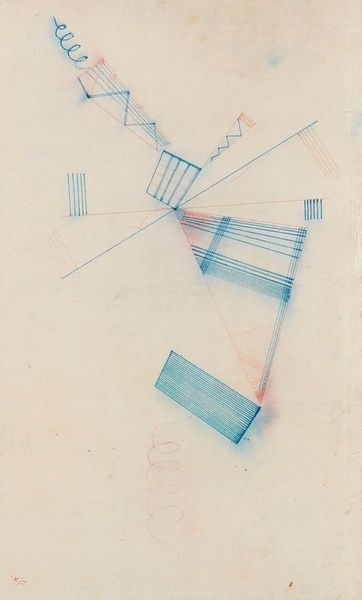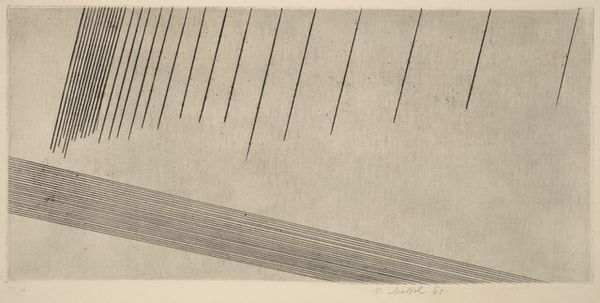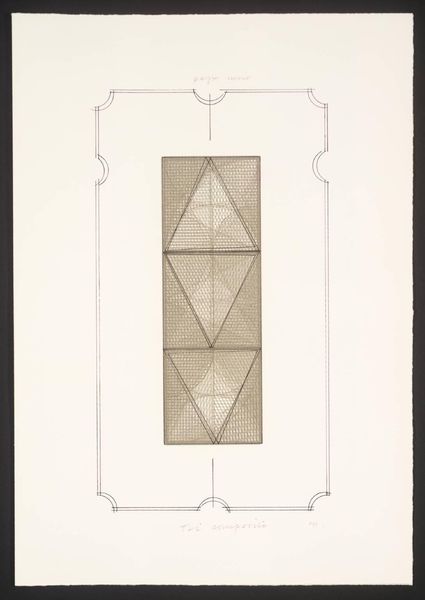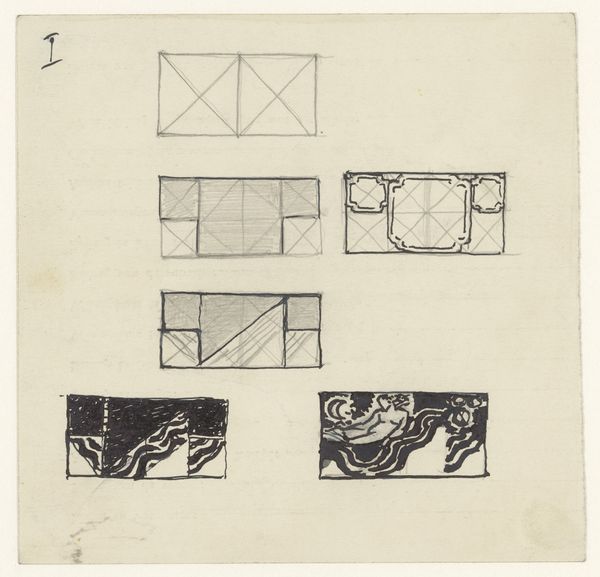
graphic-art, print
#
graphic-art
# print
#
constructivism
#
geometric
#
abstraction
#
line
Copyright: Public domain
Curator: Hello, and welcome. We're standing before László Moholy-Nagy's "Composition" from 1921, a striking example of his graphic work from this period. Editor: My first thought? Restlessness. There's an incredible tension between the sharp angles and the ethereal sphere. It's dynamic and unsettling, all in black and white. Curator: It's quintessential Constructivism. Notice how Moholy-Nagy employs pure geometric forms – lines, squares, circles – divorced from any representational context. What could that imply during this tumultuous period after World War One? Editor: A complete rebuilding, right? Radically rethinking the foundations of art, and, by extension, society. A visual language purged of sentimentality, intended to create a new objectivity and functionality. Look how these floating shapes seem to both collide and coexist. I’m seeing potential versus limitation. Curator: Absolutely. And the use of seemingly weightless lines floating in the black background evokes the technological optimism of the time. It also resonates with the search for underlying, universal structures found across different media, from architecture to typography to photography. The symbolism isn't just in the shapes, but in the way they're presented. The dot matrix creates an illusory spatial dynamic – how is that affecting your reading? Editor: The sphere throws me, actually. The piece mostly seems very controlled and intentional. And I do think the texture lends this otherwise strict composition a touch of humanity. And the contrast really brings into focus that desire for clarity and order amidst the postwar uncertainty. Curator: Exactly. It seems as though the tension exists precisely to reconcile a modern machine aesthetic and something ineffably human – or divine? These symbols contain the visual rhetoric for revolution, that is clear. Editor: Which means the piece holds conflicting ideologies, for certain. I now understand more the need for art to communicate a vision of the future. It's interesting that over a hundred years later, we can see how that promise did not completely materialize, and reflect on its original intent in a critical, more nuanced way. Curator: Agreed. Reflecting on "Composition," it underscores the power of pure form to encapsulate complex social and psychological landscapes. Editor: Indeed. It invites us to deconstruct not just the artwork, but the world around us, seeking out the foundational geometries of power and possibility.
Comments
No comments
Be the first to comment and join the conversation on the ultimate creative platform.
